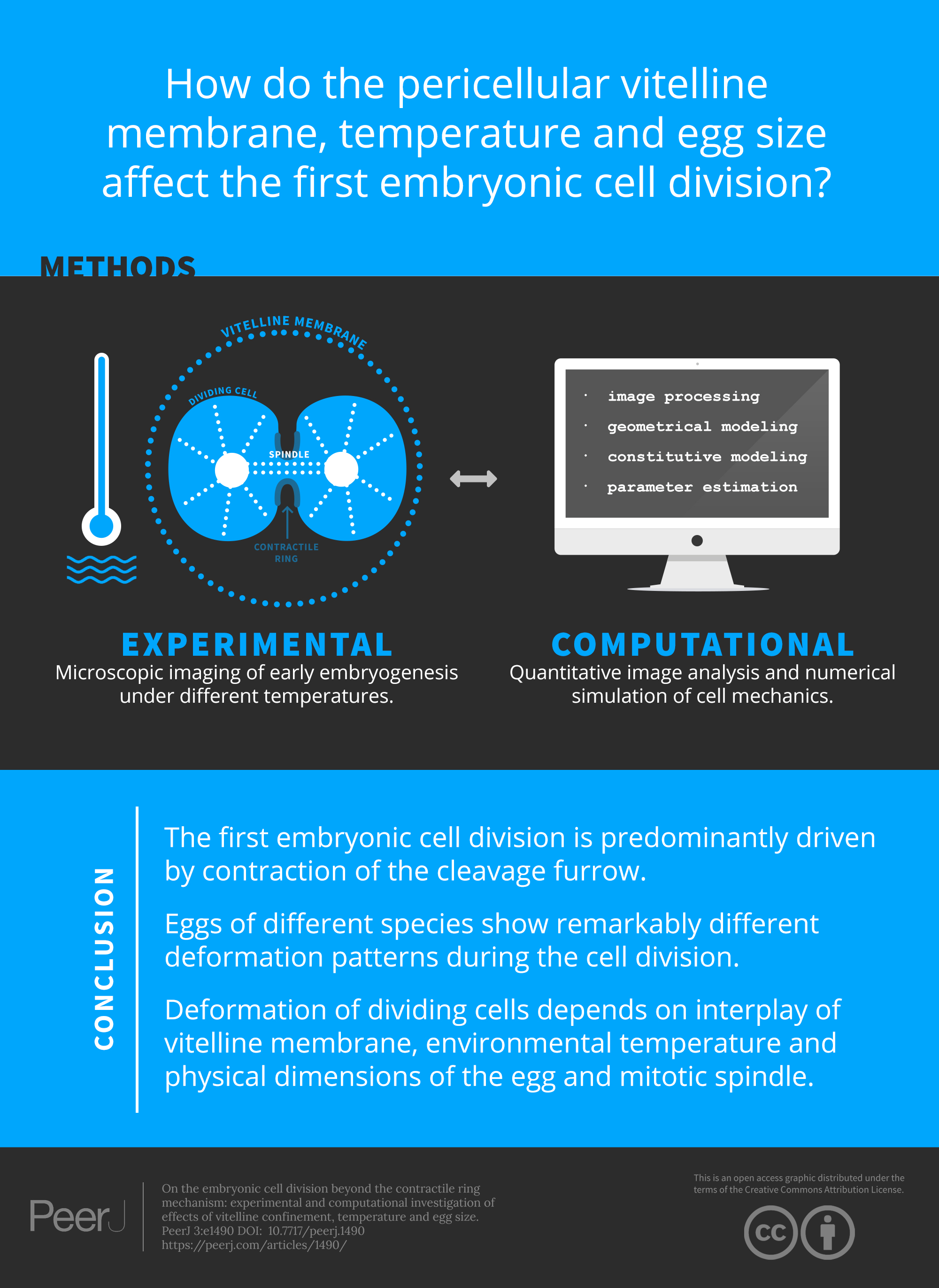LAY SUMMARY
The first embryonic cell division is predominantly driven by contraction of the cleavage furrow. Eggs of different species show remarkably different deformation patterns during the cell division. Deformation of dividing cells depends on interplay of vitelline membrane, environmental temperature and physical dimensions of the egg and mitotic spindle.
ABSTRACT
Embryonic cell division is a mechanical process which is predominantly driven by contraction of the cleavage furrow and response of the remaining cellular matter. While most previous studies focused on contractile ring mechanisms of cytokinesis, effects of environmental factors such as pericellular vitelline membrane and temperature on the mechanics of dividing cells were rarely studied. Here, we apply a model-based analysis to the time-lapse imaging data of two species (Saccoglossus kowalevskii andXenopus laevis) with relatively large eggs, with the goal of revealing the effects of temperature and vitelline envelope on the mechanics of the first embryonic cell division. We constructed a numerical model of cytokinesis to estimate the effects of vitelline confinement on cellular deformation and to predict deformation of cellular contours. We used the deviations of our computational predictions from experimentally observed cell elongation to adjust variable parameters of the contractile ring model and to quantify the contribution of other factors (constitutive cell properties, spindle polarization) that may influence the mechanics and shape of dividing cells. We find that temperature affects the size and rate of dilatation of the vitelline membrane surrounding fertilized eggs and show that in native (not artificially devitellinized) egg cells the effects of temperature and vitelline envelope on mechanics of cell division are tightly interlinked. In particular, our results support the view that vitelline membrane fulfills an important role of micromechanical environment around the early embryo the absence or improper function of which under moderately elevated temperature impairs normal development. Furthermore, our findings suggest the existence of scale-dependent mechanisms that contribute to cytokinesis in species with different egg size, and challenge the view of mechanics of embryonic cell division as a scale-independent phenomenon.
CITATION
(2015) On the embryonic cell division beyond the contractile ring mechanism: experimental and computational investigation of effects of vitelline confinement, temperature and egg size. PeerJ 3:e1490 https://doi.org/10.7717/peerj.1490
